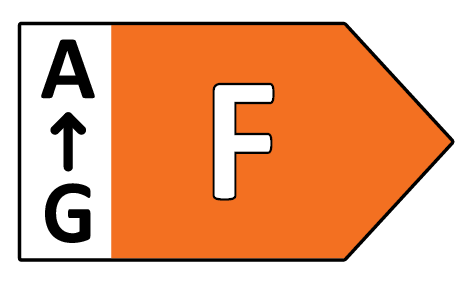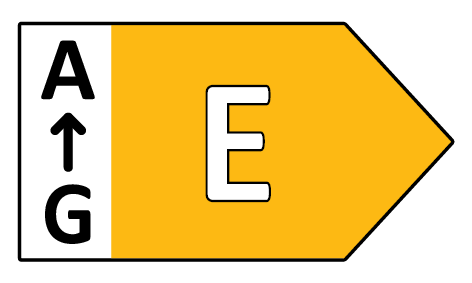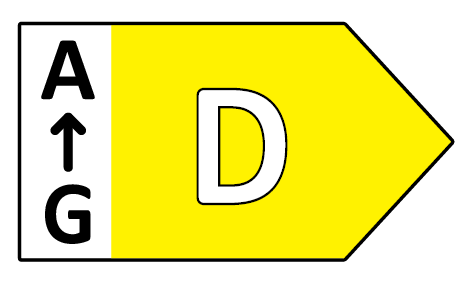
Special lamps
Specialty lamps provide specialized lighting solutions for various applications, such as medical, industrial, or artistic uses, and are available in a variety of sizes, shapes, and specifications.









































Special lamps
Special lamps are light sources developed for special applications. They differ from conventional lamps in their specific properties and possible applications. Special lamps include, for example, UV lamps, IR lamps, LED lamps for special colors or color temperatures, and low-voltage lamps for use in humid or explosive environments.
Depending on the area of application, special lamps have different requirements in terms of their output, color rendering, luminous intensity and light quality. It is therefore important to carefully consider the requirements of the specific application when selecting the right specialty lamp.
Another important criterion when using specialty lamps is compliance with regulations and standards that apply to specific areas of application. These include, for example, standards for electrical safety or protection against electromagnetic interference.
What forms and types of specialty lamps are there?
Specialty lamps come in many different forms and types, specifically designed depending on the application. Some examples are: UV lamps, night lamps, flashlights, infrared lamps, LED strip lamps, LED panel lamps, LED line lamps, and LED retrofit lamps. Each type of specialty lamp has its own technical specifications and performance characteristics that must be considered in order to select the right lamp for the application.
Specialty lamps are used in a wide variety of applications. Some of the most common applications include:
- Medical lighting, such as lighting for operating rooms,
- lighting for printing shops and photo labs,
- lighting for use in greenhouses,
- lighting for use in museums and art galleries,
- lighting for use in film and television studios.
Special lamps are available in many different shapes and types to meet specific requirements such as color rendering, brightness, light color and power consumption.
UV Lamps
UV lamps are light sources that emit ultraviolet radiation. This radiation is in the non-visible range of the electromagnetic spectrum and can have different effects depending on the wavelength. UV lamps are used in various fields, for example in medicine, the food industry, water and air purification, and photolithography.
In medicine, for example, UV lamps are used to treat skin diseases such as psoriasis or vitiligo. UV lamps can also be used in the disinfection of medical equipment and instruments. In the food industry, UV lamps are used to kill bacteria and other microorganisms, thus extending the shelf life of food. In water and air purification, UV lamps are used to eliminate germs and bacteria. In photolithography, UV lamps are used to expose certain materials to create a desired structure.
However, it should be noted that UV lamps can also be harmful to health. In particular, the short-wave UV-C rays can cause skin and eye damage. For this reason, UV lamps should only be used by trained personnel and appropriate protective measures should be taken to avoid uncontrolled exposure to radiation.
IR Lamps
Infrared lamps, also known as IR lamps, are light sources that emit infrared radiation. This radiation is in the non-visible region of the electromagnetic spectrum and can have different effects depending on the wavelength. IR lamps are used in various fields, for example in medicine, industry, agriculture as well as in the household.
In medicine, IR lamps are used for pain therapy and muscle relaxation. In industry, IR lamps are used, for example, to dry paints and coatings, to test weld seams or to measure temperatures. In agriculture, IR lamps can help improve the growing conditions of plants. In the home, IR lamps can be used, for example, as heat lamps for terrariums or as radiant heaters for outdoor use.
However, it should be noted that infrared radiation can also be harmful to health. In particular, prolonged, unprotected exposure can cause skin burns and damage to the eye. For this reason, IR lamps should only be used by trained personnel and appropriate protective measures should be taken to avoid uncontrolled exposure to radiation.
LED line lamps
LED line lamps are light sources that consist of a series of LED lights and are often used to replace conventional fluorescent tubes. They offer high energy efficiency, long life and excellent light quality. LED line lamps are used in various fields, such as offices, stores, schools and hospitals.
LED technology enables high energy efficiency as it consumes less power compared to traditional fluorescent tubes. Longer service life also reduces maintenance costs and waste. The LED light source provides excellent color rendering and high quality light, which contributes to a comfortable working environment.
LED line lamps come in different lengths and diameters to meet different requirements. The lamps can also be available in different color temperatures to create the desired ambiance. Some LED line lamps have a dimmable feature that can adjust the light intensity to suit the user's needs.
However, it should be noted that LED line lamps may also have some disadvantages. Incorrect installation or use can cause damage, which may lead to malfunction or safety hazards. Some LED line lamps may also flicker or produce an unpleasant flicker, which may cause headaches or vision problems for some people.
LED Retrofit Lamps
LED retrofit lamps are light sources that are used to replace traditional incandescent or halogen lamps. They offer high energy efficiency, long life and excellent light quality. LED retrofit lamps are available in different shapes and sizes and can be used in various applications, such as homes, offices and stores.
LED technology enables high energy efficiency as it consumes less power compared to traditional incandescent or halogen lamps. A longer lifespan also reduces maintenance costs and waste. The LED light source provides excellent color rendering and high quality of light, which contributes to pleasant and functional lighting.
LED retrofit lamps come in different shapes and sizes to meet different requirements. They are usually equipped with an E27 or E14 socket, making them easy to replace with traditional incandescent or halogen lamps. They are also available in different color temperatures to create the desired ambiance. Some LED retrofit lamps have a dimmable function that can adjust the light intensity to the user's needs.
However, it should be noted that LED retrofit lamps may also have some drawbacks. Some models may flicker or produce an unpleasant flicker, which can cause headaches or visual disturbances in some people. Also, improper installation or use can cause damage that can lead to malfunction or safety hazards.
What should I look for in a specialty lamp?
Specialty lamps are a special type of light source designed to meet specific needs. They come in various forms and types, such as infrared lamps, UV lamps, fluorescent lamps with high color rendering, and many more.
Specialty lamps are often used in fields such as medicine, photography, printing, and science. However, it is important to pay attention to certain factors when using a specialty lamp. One important factor is the radiation emitted by the lamp. UV lamps, for example, can emit harmful radiation that can be dangerous to human health. Therefore, you should make sure that you take the appropriate protective measures when using UV lamps.
Also, when choosing the right special lamp, it is important to pay attention to the technical specifications and requirements to ensure that the lamp is suitable for the desired purpose. In any case, when using specialty lamps, make sure they meet the appropriate regulations and standards and are suitable for the intended use.
The color rendering of specialty lamps
The color rendering of specialty lamps, such as halogen lamps or LED lamps, is an important factor in visual perception and can vary greatly depending on the application. The color rendering index (CRI) is a measure of the quality of the color rendering of a light source. A high CRI value means that the colors under this light source are represented naturally and realistically.
Especially in applications such as art and design lighting, in medical and dental practices, or in the textile and cosmetics industries, high color rendering is crucial. Accurate color rendering is essential here to correctly reproduce the color impression of the object being viewed.
Depending on the application, however, lamps with lower color rendering are also suitable, e.g. in street lighting or for illuminating industrial halls. Here, high brightness and energy efficiency are often more important than high color rendering.
The brightness of special lamps
The brightness of special lamps, such as halogen lamps or LED lamps, can vary greatly depending on the application. Brightness is measured in lumens (lm) and indicates how much light a lamp emits.
Particularly in applications such as workplace lighting or industrial manufacturing, sufficient brightness is essential to create a pleasant and productive working environment. Here, high illuminance levels of several hundred lux are also required.
However, depending on the area of application, lamps with a lower brightness are also suitable, e.g. in residential lighting or outdoor lighting. Here, a cozy and atmospheric lighting is often desired, which requires a lower brightness.
It should be noted that too high brightness can also cause undesirable glare. For this reason, special lamps should always be matched to the application in question in terms of their brightness and illuminance.
The light color of special lamps
The light color of special lamps, such as halogen lamps or LED lamps, can vary greatly depending on the application. Light color is measured in Kelvin (K) and indicates what color temperature the light has.
Especially in applications such as residential or commercial lighting, a suitable light color is crucial to create a pleasant and atmospheric ambience. Warm white light with a color temperature of around 2700-3000K is often preferred here. In industry or the medical sector, on the other hand, cool white light with a color temperature of around 4000-5000K may be required to better perform tasks.
However, depending on the application, other light colors may also be suitable. For example, colored lamps can be used in event technology or in the illumination of shop windows or display cases. Here, it is important that the light color meets the requirements and needs of the particular application.
A light color that is too high can also cause undesirable glare effects. For this reason, special lamps should always be matched to the respective application in terms of their light color and light intensity.
The power consumption of special lamps
The power consumption of special lamps, such as halogen lamps or LED lamps, can vary greatly depending on the application. Power consumption is measured in watts (W) and indicates how much energy a lamp consumes.
Especially in applications where lighting is needed over a long period of time, such as in industry or offices, low power consumption is advantageous as it can reduce energy costs. LED lamps are often the best choice here, as they consume less power than conventional incandescent or halogen lamps and are therefore more efficient.
However, depending on the area of application, lamps with a higher power consumption may also be suitable, e.g. in art lighting or shop window lighting. Here, the lighting is often only necessary for a short time and the power consumption plays a subordinate role.
A low power consumption is not always to be compared with a higher energy efficiency. It is therefore important to also pay attention to the energy efficiency index (EEI) when selecting special lamps. This indicates how efficient a lamp is in relation to its brightness.
How do I properly dispose of a specialty lamp?
Proper disposal of specialty lamps, such as halogen lamps or LED lamps, is important to avoid environmental damage. Because these lamps can often contain harmful substances such as mercury or lead, they should not simply be disposed of with household waste.
There are several options for disposing of specialty lamps. One option is to hand them in at a municipal collection point for electronic waste or hazardous waste. Here, the lamps are recycled professionally and the harmful substances are disposed of safely.
Another option is to return the special lamps to the dealer or manufacturer. Many manufacturers now offer free take-back and recycling programs for their products to ensure environmentally friendly disposal.
It is important to handle the lamps carefully before disposal to avoid breakage and leakage of harmful substances. Protective gloves and goggles can be helpful in this regard.
 Deutsch
Deutsch
 English
English
 Nederlands
Nederlands
 Français
Français
 Contacts
Contacts
 +49(0)2822-9148740
+49(0)2822-9148740












 Andorra
Andorra
 Belgien
Belgien
 Bosnien und Herzegowina
Bosnien und Herzegowina
 Bulgarien
Bulgarien
 Dänemark
Dänemark
 Estland
Estland
 Finnland
Finnland
 Frankreich
Frankreich
 Griechenland
Griechenland
 Irland
Irland
 Island
Island
 Italien
Italien
 Kroatien
Kroatien
 Lettland
Lettland
 Liechtenstein
Liechtenstein
 Litauen
Litauen
 Luxemburg
Luxemburg
 Malta
Malta
 Monaco
Monaco
 Niederlande
Niederlande
 Norwegen
Norwegen
 Österreich
Österreich
 Polen
Polen
 Portugal
Portugal
 Rumänien
Rumänien
 San Marino
San Marino
 Schweden
Schweden
 Schweiz
Schweiz
 Serbien
Serbien
 Slowakei
Slowakei
 Slowenien
Slowenien
 Spanien
Spanien
 Tschechische Republik
Tschechische Republik
 Ungarn
Ungarn
 Vereinigtes Königreich
Vereinigtes Königreich
 Zypern
Zypern



















.jpg)




